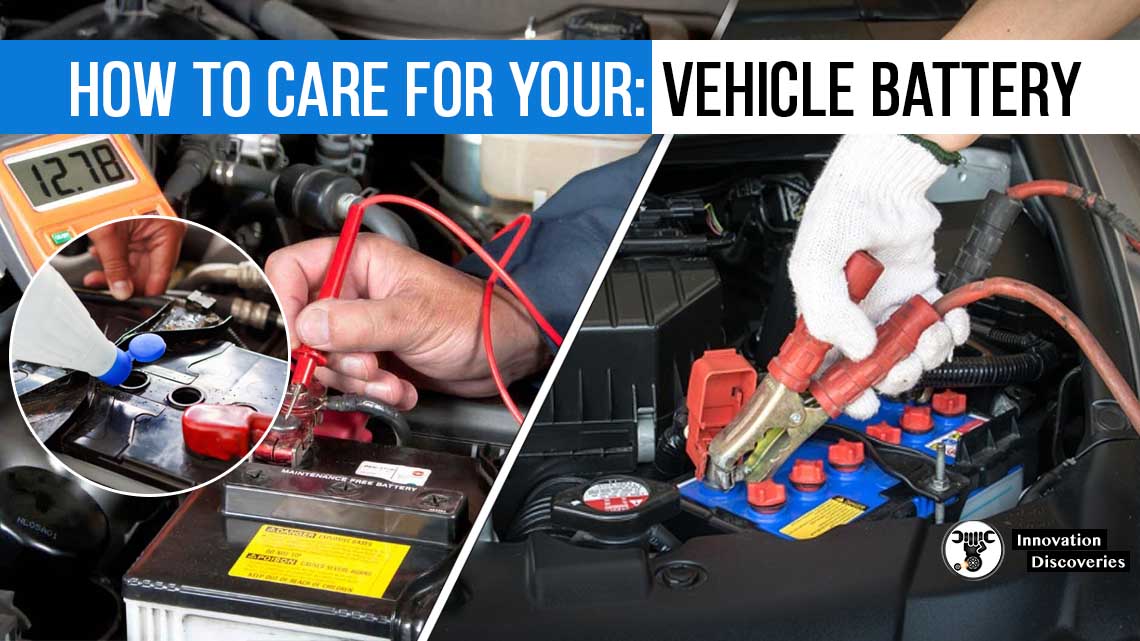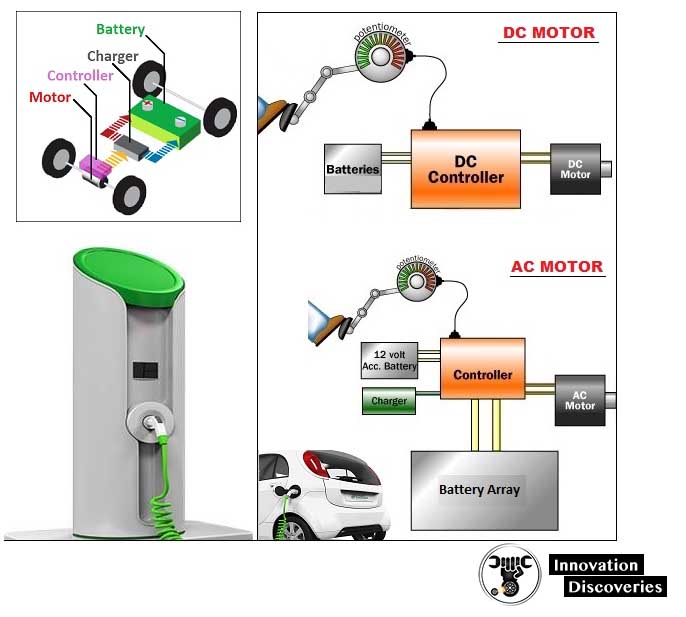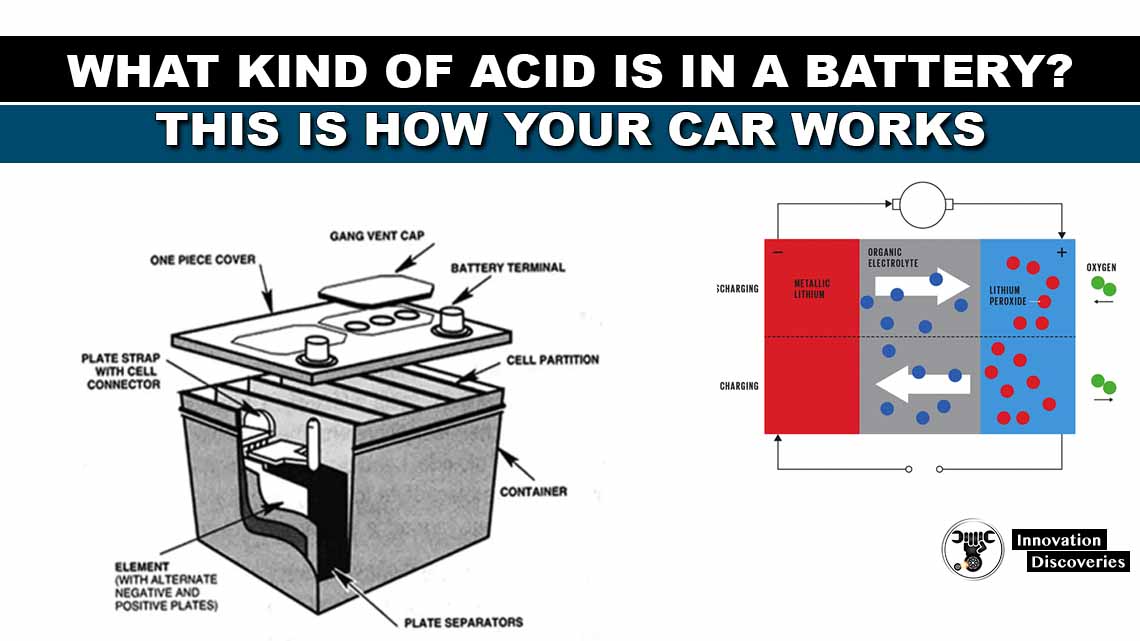
What is a vehicle battery?
The vehicle’s 12-volt battery is constructed of lead plates, sulfuric acid, and separators encased by a plastic housing — the battery is divided into 6 cells by the internal separators.
There are two posts on the battery — a positive and a negative — which allow the vehicle’s battery cables to be attached & the battery to be inserted into the electrical system on the vehicle.
The battery produces electricity by converting chemical energy into electrical energy.
The measure of a battery’s power output is commonly seen in Cold Cranking Amps (abbreviated CCA), which is a measurement of the number of amps the 12-volt battery can produce at 0°F for 30 seconds while maintaining a voltage of at least 7.2 volts.
LEAD ACID VS. LITHIUM CAR BATTERY: WHAT’S THE DIFFERENCE?
Why is the battery important?
This one is obvious! The primary function of the battery is to store energy to start the vehicle.
When the energy is used to start the vehicle, the battery becomes discharged.
Luckily, the battery can recharge, which is performed by the alternator when the engine is running.
The battery also has a few secondary functions it performs, such as acting as a capacitor in the vehicle’s electrical system.
Frequently (similar to household electricity fluctuations, but more frequent), there can be voltage spikes in the vehicle’s electrical system that could be potentially damaging to sensitive electronics.
A vehicle’s battery will absorb these voltage spikes and prevent damage to these components.
When the engine is not running, the battery also provides power to the vehicle’s accessories which are usually supplied by the alternator, such as the radio, alarm, or lighting.
RELATED CONTENT:
- BUYING AN ALTERNATOR – WHAT YOU NEED TO KNOW
- MOST COMMON LOOSE ALTERNATOR BELT SYMPTOMS
- CAR BATTERY OR ALTERNATOR: WHICH ONE IS THE CULPRIT BEHIND A DEAD CAR?
- 5 SIGNS OF A BAD ALTERNATOR
- CAR ALTERNATOR FUNCTIONS AND SYMPTOMS OF FAILURE
- 5 CAUSES OF AN ALTERNATOR NOT CHARGING
- THE PROCEDURE OF JUMPSTARTING A CAR WITH A BAD ALTERNATOR
It’s important to remember that there is a finite amount of power that a battery can provide.
If you like to listen to the radio in the car while you’re not driving, you should always have the engine running, so the battery can charge.
This will help make sure you can always restart your vehicle without having to call for a jump-start.
WHAT KIND OF ACID IS IN A BATTERY? THIS IS HOW YOUR CAR WORKS
What can go wrong?
The biggest problem for a battery is heat, which damages internal components.
If the battery is installed underneath the hood, they are typically seen located as far away as possible from the engine as possible.
Other times, the manufacturers will locate the battery in different places on the vehicle, such as under the floor or in the trunk.
Another common issue is sulfation, which happens when the lead plates inside the battery become coated with a hard layer of lead sulfate.
Sulfation occurs when the battery becomes discharged.
Common causes of discharging the battery are extended periods of sitting, leaving a light on overnight or driving with a failed alternator.
Occasionally a battery can also leak, build up corrosion at the battery terminals, or have a loose connection to the battery cables.
Any of these issues can reduce the amount of power the battery can provide.
Batteries generally have a lifespan of 4 to 6 years of normal use.
The battery will age because the active layer of material from the plates of the battery will deteriorate and sink to the bottom of the case.
The battery will need to be replaced when the amount of active material remaining isn’t enough to start the engine.
How do you know if it needs work?
When your vehicle is serviced at regular intervals, it is common for a technician to inspect the battery in a few different ways.
A battery is routinely checked to ensure it is not leaking and has clean and tight connections to the battery cables.
Many technicians will also run what is called a “load test” on the battery.
This test simulates an electrical load equivalent to starting the engine on your vehicle and measures the battery’s electrical response.
If your battery fails a load test or shows a significantly diminished capacity, it’s a good idea to replace it soon to prevent yourself from getting stuck somewhere later on.
If your battery is leaking, it will generally need to be replaced too.
How much does it cost and why?
A high-quality automotive battery can cost between $125 — $250 depending on the vehicle application.
Labour to replace will vary depending on the location of the battery in the vehicle.
Typically, a technician will need between thirty minutes and two hours to replace the battery.
When replacing the battery, a technician will also clean the battery cables to ensure a proper connection.
They may also have to reset or adapt the vehicle’s control modules to accept the new battery — this is generally done using a scan-tool.
In rare cases, one of the front seats may need to be removed to access the battery; this requires recalibration of the weight sensing system for the seat.
As you can see, there are a lot of variables when replacing the battery, which means the total cost may fluctuate.
It is important to note that in modern vehicles, battery technology is rapidly evolving.
This article describes a lead-acid 12-volt battery for non-hybrid, and non-electric cars (those battery topics will be covered in a separate article)
Recommendation
In the event a problem with your battery is noticed during routine maintenance, it is important to address the concern sooner rather than later.
This will help ensure your vehicle remains reliable and reduces the risk of leaving you stranded in an unfortunate situation due to a preventable issue.
BATTERY IGNITION SYSTEM : PARTS, FUNCTION, WORKING, ADVANTAGES AND DISADVANTAGEAS
DON’T MISS
HOW FULLY ELECTRIC CARS WORK
An All-Electric Car does not have an internal combustion engine because an electric motor is to replace it fully.
In an electric vehicle, the large traction batteries using to power the electric motor, which is quite expensive and takes up a lot of car space.
Read More: IC ENGINE: COMPONENTS AND THEIR FUNCTIONS, TYPES, AND TERMINOLOGY
HOW LONG DO ELECTRIC CAR BATTERIES LAST?

Without a doubt, a question in the minds of many is when will electric cars be cheaper. It can`t be done in the short term.
The reduction in the cost of an electric car directly depends on the cost of the battery pack.
The development of battery technology for electric vehicles more efficient is enough difficult task for all automotive engineers all over the world.
Download: FUEL SYSTEM FOR IC ENGINE | PDF
Failing to address these problems a major barrier to an effective electric car improvement.
The achievement of this purpose is the greatest challenge to electric car improving in the future.
Therefore, an EV equipped a traction battery pack with large size.
Read More: PERMANENT MAGNET SYNCHRONOUS MOTOR CONSTRUCTION
The battery pack is a very important component of EV because it uses to power the electric motor.
Electric motor, in turn, drives the car`s wheels. The electric motor runs on electricity, so the car emits no exhaust gases from a tailpipe.
Read More: ELECTRIC TRACTION MOTOR CONSTRUCTION
EVs` don’t need gas, but you should find the charging place for an electric car.
Where can I charge an electric car?
You can do the battery pack charge on the special charging station or wall outlet near the office or home.
One electric car advantage is its simplicity because EV not contains any different fuel components, such as a fuel pump, fuel filter, fuel tank or fuel line.
Download: BUILD YOUR OWN ELECTRIC VEHICLE
Download: ELECTRIC AND HYBRID VEHICLES BY TOM DENTON | PDF
Let`s go to study more useful information about all-electric cars.
You need to take the time to study the anatomy of electric vehicles. It will help to understand how it works on an electric vehicle.
CLICK HERE TO Continue Reading
Visit Forum
Visit Our Friendly Website









